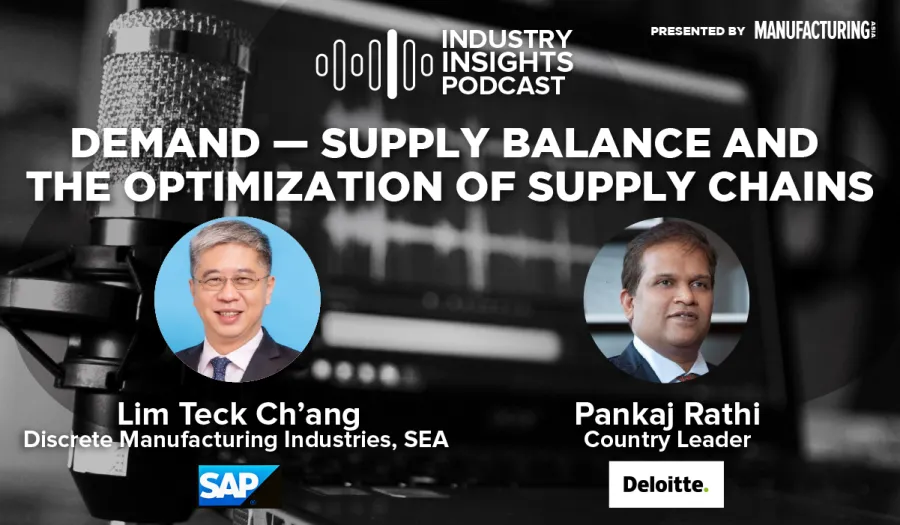
Where should manufacturers focus on to maintain profitability?
Discrete Manufacturing Industries director and Deloitte Consulting-Vietnam country leader discusses the importance of supply chain optimisation.
Most manufacturers are now grappling with an overarching need to make their businesses as fast, as responsive and as collaborative even amidst the crisis. The COVID-19 pandemic was a major shock and has basically exposed a lot of structural weaknesses in the existing supply chain such as supply disruptions, high demand mortality, capacity constraints, and unpredictable downtimes.
The pandemic has basically forced companies to move faster, especially with their supply chain networks. Companies will need to look at how they can adapt to the built environment, and how they want to operate in a multi-couple type economist market.
In the third podcast installment of SAP’s pilot series of podcasts - SAP Industry Insight - Demand—Supply Balance and the Optimisation of Supply Chains, Lim Teck Ch’ang, director of industries and digital leadership of Discrete Manufacturing Industries, SEA; and Pankaj Rathi, country leader of Deloitte Consulting in Vietnam discussed the importance of optimising the supply chain for manufacturing companies and catering the demand for end consumers.
The podcast also touches on the pain points to focus for manufacturers especially with the planning, supply, and demand changes, as well as the trends shifts and changes in the Asia Pacific manufacturing sector since the onset of the COVID-19 pandemic.
“This pandemic has basically forced many companies to rethink and transform their entire supply chain model. It has also exposed the vulnerability of the organisation in terms of fulfilling their needs for the raw material and finished products,” said Pankaj Rathi.
Optimising the supply chain
“As a manufacturing company, the optimisation of the supply chain is actually critical to achieving your business objectives. Your lifeblood is manufacturing and you can't make or build a product if you do not have the materials that you need ready,” said Lim Teck Ch’ang.
Getting this right at the right cost level is critical to maintaining profitability, right to make to retain the customer for the long term. Manufacturers need to produce and deliver what the customer needs at a time that they want it and at the right cost levels to build a sustainable business model.
Lim added that manufacturers need to understand their demands so they can plan more accurately to meet them. This would also help them understand their own constraints in meeting any projected demand from available machine capacity available or manpower, available raw materials, and their capacity in a subcontracting ecosystem. Manufacturers also need to balance both customer demand and the business’ own constraints transparently.
In a nutshell, having a sustainable business model is often a collaborative effort between manufacturers, suppliers, and customers. However, because of the challenging environment and the complexity of today's supply chain, manufacturers may find a hard time to do this well.
Despite this, Lim notes that solutions, such as SAP’s integrated business planning and its integration to historical transactions and outside data sources will give manufacturers a better understanding of the demand and arrive at better forecasts, allowing them to collaborate closely with suppliers and customers and synchronise your supply chain planning in real time.
SAP solutions and the various cloud technologies available are also the key to a kinetic enterprise and supporting the enterprise's ability to respond to the change and the ability to function as a dynamic, adaptable and a living organisation.
The potential of using solutions and products to get real time insights and perform an extensive ‘What if?’ simulation would help in getting a consensus between the various departments, and then immediately take it towards the operational transactions.
For more information, subscribe now to SAP’s channels in Spotify and Google podcasts or visit sap.com/sea













